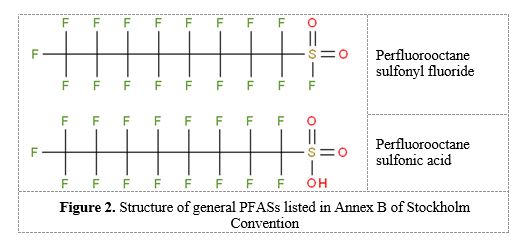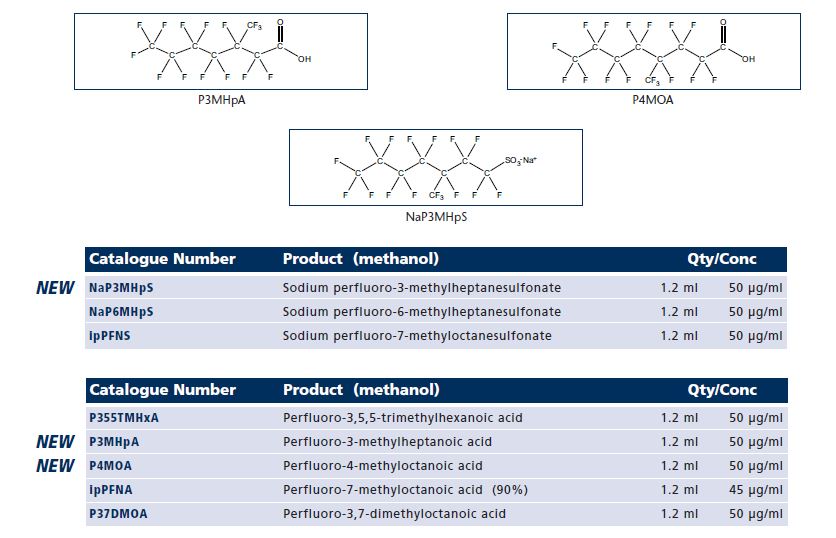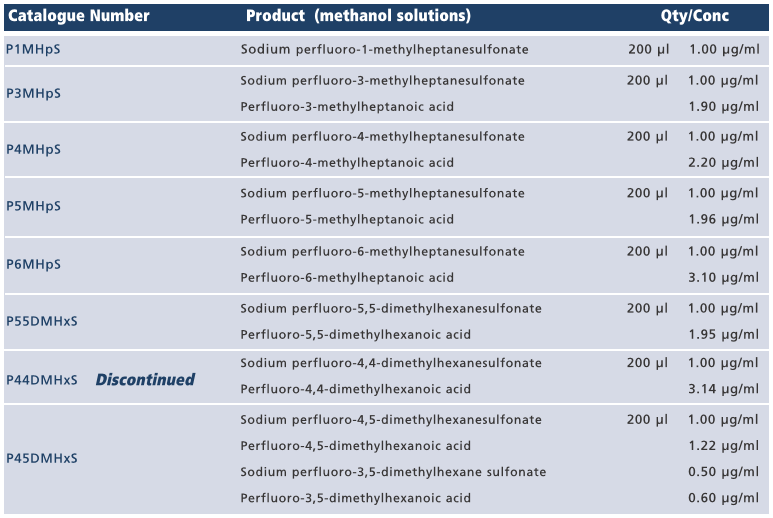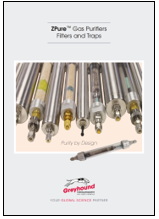Development of extraction and cleanup approachesfor PFASs analysis in fish tissue by HPLC-MS/MS technique
A V Sorokin, V V Ovcharenko, K A Turbabina, A I Kozhushkevich, A M Kalantaenko, A A Komarov
The Russian State Center for Quality and Standardization of Veterinary Drugs and Feed (VGNKI), Moscow, Russia, 123022
Abstract. The history of PFASs emergence and current status in the context of the Stockholm Convention on POPs, their environmental distribution and toxicity are discussed. Various approaches to PFASs analysis in fish tissues are discussed. An original method of sample preparation is described, which allows quantitative PFASs determination at 0.2 – 100 ppb levels.
- Introduction
Perfluorinated compounds (PFASs), classified according to the recommended terminology [1], are a large family of technogenic contaminants. The family consist of different compound classes, such as carboxylates, sulfonates, sulfonamides, alcohols and etc., of which carboxylates and sulfonates are most often analysed in laboratories. PFASs started to emerge into the environment in the late 40s as by-products of Teflon development by DuPont. Teflon was approved by FDA for kitchenware coating in 1962, and Zonyl was approved for food packaging in 1967. At present, PFASs are used in textile industry, paper production, as components in various resins, foams, etc. Accordingly, perfluorooctanoic acid (PFOA) (Fig. 1) was first detected in the blood samples of factory personnel in 1978, and in the ground water in 1984. Due to toxicity concerns, some companies stopped producing 8-carbon PFAS since 2000.
PFASs are stable contaminants capable of bioaccumulation, they are detected in animal tissues. At present, the worldwide production of PFASs has been reduced due to information about their potential health risks, including risks of cancer promotion. According to the European Union data on PFAS in food collected in 2006 – 2012, perfluoroalkanesulfonates (PFSAs) and perfluoroalkylcarboxylicacids (PFCAs) are the most widespread food contaminants. PFSAs were mostly found in fish, meat, drinking water and fruits. The highest levels were detected in liver samples.
High levels of PFCAs and PFSAs were found in marine mammals feeding on fish in such industrially developed areas as the Baltic Sea, Mediterranean, the Great Lakes, and along the South East Asia coast, but also in such remote areas as Alaska and the Antarctic (Table 1).
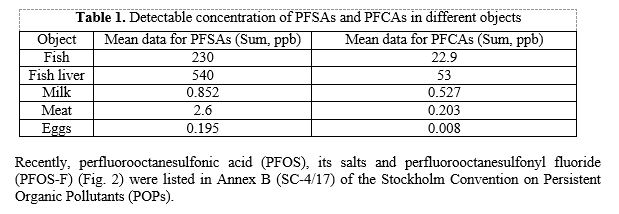
Most common approaches to PFASs extraction and cleanup involve methanol, acetonitrile, and their mixtures with acidic or alkaline modifications followed by SPE cleanup on commercial sorbents. Here we report on the determination of perfluorinated carboxylates and sulfonates in medium-fat fish tissues using an alternative method of lipids removal described below.
2. Materials and Methods
2.1. Chemicals and Standards
All chemicals were of analytical grade and obtained from Sigma-Aldrich, Fluka and Merck companies. The PFASs standards (PFPeA, PFHxA, PFHpA, PFOA, PFNA, PFDA, PFUdA, PFDoA, PFTrDA, PFTeDa, PFHxDA, PFODA, PFBS, PFPeS, PFHxS, PFHpS, PFOS, PFNS, PFDS, PFDoS) and labeled standards were obtained from Wellington Laboratories. Blank fish samples were obtained from a local commercial source. Oasis WAX cartridges (3 cc, 60 mg) were obtained from Waters. The Reacti-Therm (heating and stirring module, Thermo) was used for concentration step.
DOWNLOAD THE FULL PAPER HERE PDF
Acknowledgement for publication to:
A V Sorokin, V V Ovcharenko, K A Turbabina, A I Kozhushkevich, A M Kalantaenko, A A Komarov
The Russian State Center for Quality and Standardization of Veterinary Drugs and Feed (VGNKI), Moscow, Russia, 123022
You May Also be Interested in
New Branched Perfluoroalkyl Reference Standards
It is well documented that many environmental samples contain both branched and linear isomers of perfluoroalkyl carboxylic acids and perfluoroalkanesulfonate salts. In response to customer requests for quantitative reference standards for these compounds, wellington Laboratories has synthesized additional branched perfluoroalkyl compounds (P3MHpA, P4MOA, and NaP3MHpS) to complement their currently available selection of standards. A typical commercial sample of perfluorooctanesulfonic acid (PFOS) contains 5% and 11% of NaP3MHpS and NaP6MHpS respectively. Similarly, technical mixtures of perfluorooctanoic acid (PFOA) contain approximately 3% of P3MHpA. It is hoped that the continued introduction of certified branched perfluoroalkyl reference standrds will aid researchers in the analysis of these compounds in environmental and biological samples.
Wellington Reporter May 2019
Wellington Reporter Discontinued Products
PRODUCT DISCONTINUED
P44DMHxS
Unfortunately, P44DMHxS (a mixture of perfluoro-4-4-dimethylhexane sulfonate and perfluoro-4-4-dimethylhexanoic acid) is being discontinued due to limited interest and a lack of inventory. However, these compounds are identified as minor components in our br-PFOSK/T-PFOS and T-PFOA reference standards respectively. We apologize for any inconvenience this may cause and appreciate your understanding.
About Wellington Laboratories
For Over 35 years Wellington Laboratories Inc. has been internationally recognised as a trusted source of high quality reference standard solutions for use in environmental/analytical testing and toxicological research. Wellington Laboratories offers an extensive inventory of individual certified reference standards and solution mixtures of native and mass-labelled halogenated organic compounds including polychlorinated dibenzo-p-dioxins, polychlorinated dibenzofurans, polychlorinated biphenyls, halogenated flame retardants and perfluorinated compounds. Wellington Laboratories also offer a variety of calibration sets and support solutions designed to be used for common regulatory methods or modified in-house methods.
Wellington’s Reference Standards are used mainly in Environmental/analytical testing and toxicological research. Wellington offers an extensive inventory of individual certified reference standards and solution mixtures of native and mass-labelled halogenated organic compounds including polychlorinated dibenzo-p-dioxins, polychlorinated dibenzofurans, polychlorinated biphenyls, halogenated flame retardants and perfluoronated compounds. Wellington also offer a variety of calibration sets and support solutions designed to be used for common regulatory methods of modified in-house methods.
Wellington Laboratories are committed to the distribution of quality products as well as the maintenance of excellent customer service. In fact, in order to provide your customers with the best possible service, Wellington have three ISO certifications (ISO 9001:2008, ISO/IEC 17025:2005, and ISO Guide 34:2009) which cover all aspects of planning, production, testing, distribution, and post-distribution service. These certifications allow Wellington Laboratories to monitor and maintain the highest level of quality and service and also allow their customers to satisfy the requirements of their own ISO certifications.
Wellington’s ISO/IEC 17025:2005 accreditation has been certified by the Canadian Association for Laboratory Accreditation Inc. (CALA) the scope is available for review on the CALA Directory of Accredited Laboratories (http://www.cala.ca).
Similarly, Wellington’s ISO Guide 34:2009 accreditation has been certified by ANSI-ASQ National Accreditation Board (ANAB), the certificate and scope are available on their website (http://anab.org/).
We are able to supply hard copies of any of the ISO certificates for yourself and your customers.
Full Range of Wellington Laboratories' Products
CONTACT US
Tel: +44 (0) 151 649 4000
Email: marketing@greyhoundchrom.com
FOLLOW US
YOU MAY ALSO BE INTERESTED IN OUR NEWSLETTER



